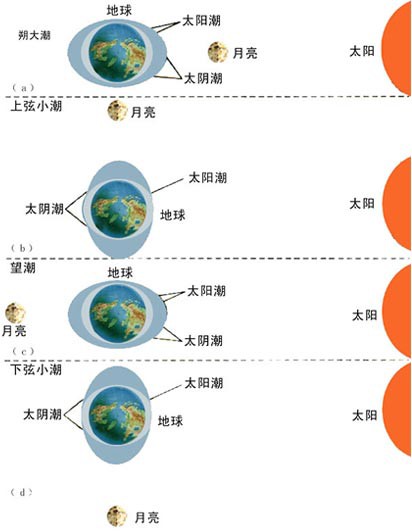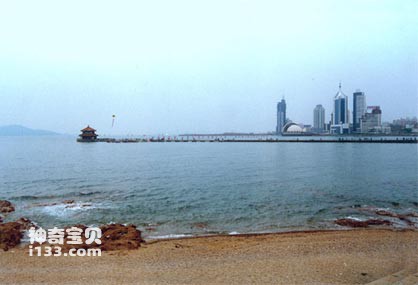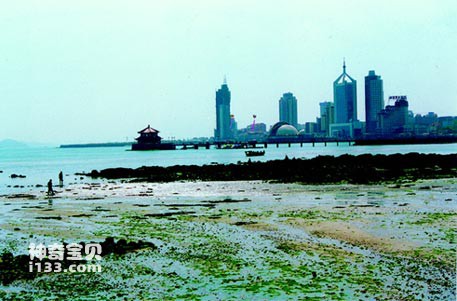"The moon waxes and wanes," the sea has its ebb and flow, and the water in the sea rises and falls on time every day. In ancient times, people called the rise and fall during the day "tide" and the rise and fall at night as "tide". Together they are called "tide". Tidal phenomena cause the sea surface to rise and fall regularly, just like people breathing. When the sea water rose, I saw the head of water like a horse, galloping from the distance of the sea. In a blink of an eye, the water filled the bay, and the waves crashed on the shore, making a thunderous roar, spraying foam, and smelling of starfish. The child comes to the nose. That can only be described as magnificent. When the tide goes out, there is a different scenery. I saw the seawater gradually falling back, and in an instant, the golden sandy bottom covered by the seawater and strange-shaped rocks were revealed.

Tide diagram

Schematic diagram of tidal movement
Why does the tide move day and night, over and over again? What force causes the seawater to rise and fall so regularly? Many scientists in ancient my country have discovered, through long-term observations, that the ocean tide phenomenon is closely related to the waxing and waning of the moon. Tides are caused by the gravitational pull of the sun and moon on seawater. According to the law of universal gravitation, there is mutual attraction between two objects; the magnitude of the gravitational force is directly proportional to the product of the masses of their objects and inversely proportional to the square of the distance between them. The greater the mass of two objects, the greater the gravitational force on each other; the farther the distance between the two objects, the smaller the gravitational force. As we all know, the time it takes for the earth to orbit the sun is one year, and the time it takes for the moon to orbit the earth is one month. Take the Earth and the Moon as an example. They all have an attraction to each other. If they were stationary, they would collide with each other; but because they are constantly rotating, they would produce a force in the opposite direction of gravity. centrifugal force, and both forces are equal in magnitude and therefore in equilibrium. However, the gravity of the moon on each particle on the earth's surface is different; in some places, the gravity is greater than the centrifugal force; in some places, it is less than the centrifugal force. The difference between the two forces is the tidal force that produces the tide phenomenon.
The tidal force of various places on the earth changes with the distance between places and moons. In addition, the earth is constantly rotating, and it changes at any time. Therefore, various places have tidal fluctuations of different sizes at different times.

Qingdao Zhanqiao at high tide

Qingdao Zhanqiao at low tide
animal tags:
We created this article in conjunction with AI technology, then made sure it was fact-checked and edited by a Animals Top editor.